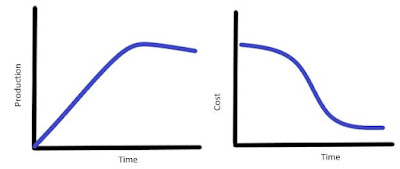Methods of Rating :
Following are the important methods used for performance rating:
1. Speed rating
2. Rating Westinghouse System
3. Synthetic Rating
4. Objective rating
5. Physiological assessment of performance rating
1. Speed rating
This rating method judges the speed/pace of the operator relative to a normal speed and is referred to as a factor. This rating is applied to each component and the observed time for each component is multiplied by this factor (the ratio of observed speed to expected speed) to obtain the basic time (typical time) for the component.
2. Rating Westinghouse System
Four systems of performance rating were developed at Westinghouse.
These reasons are as follows:
(A skill
(b) Efforts
(c) Conditions
(d) Continuity
3. Synthetic Rating
In this method, the worker's performance is rated against already known standards by PMTS (Predetermined Pace and Time Study). In this method, timing studies are carried out in the usual manner and then the actual timing obtained for certain components from this study is compared with known values. The ratio of the standard time of a particular element to the observed time of the same element is the rating factor for the study. The rating factor for the study is the average of the rating factors obtained for the various components of the study. Attempts must be made to determine rating factors for as many components as possible. In this method, it is assumed that the performance of the entire study will be the same as obtained in these components.
If R = performance rating factor
P = default value for a component
A = Average actual time obtained in the time study for that component.
Then R = P/A
4. Objective rating
In this method, rating is done in two stages, in the first stage, operators are rated by observing speed or activity rate and no effort is awarded for task difficulty. After the speed rating, in the second stage, a secondary adjustment allowance is added to the speed rating considering the difficulty of the task. The task difficulty is divided into six categories. A table provides the percentage adjustment for each of these six factors. These reasons are as follows:
(i) Amount of body used
(ii) Foot pedal
(iii) Aviation
(iv) Hand-eye coordination
(v) Handling requirements
(vi) Weight
For example, if the selected time for a component is 0.30 minutes, the speed rating is 1.10% and if all minor adjustments amount to 20%, the normal time would be = 0.30 × 1.10 × 1.20 = 0.396 minutes.













0 Comments